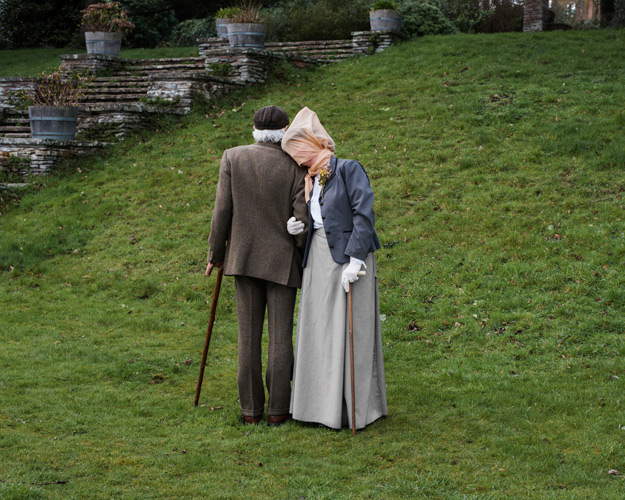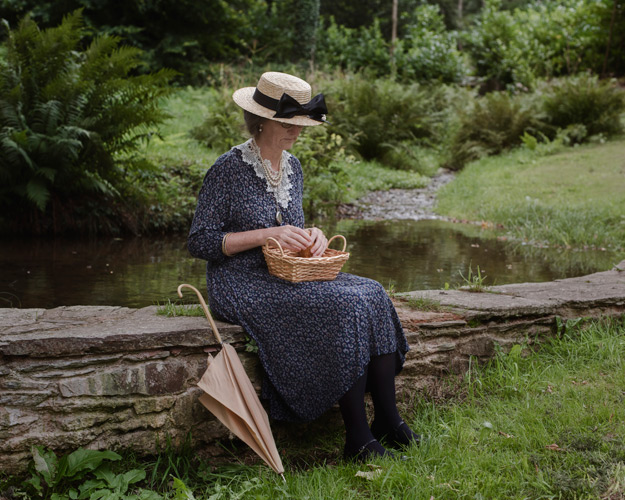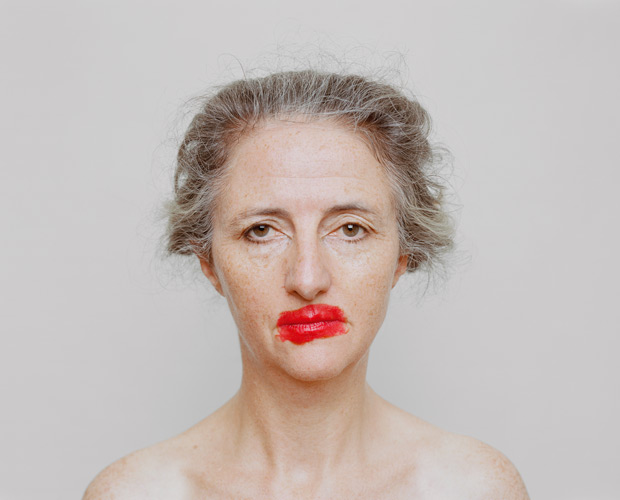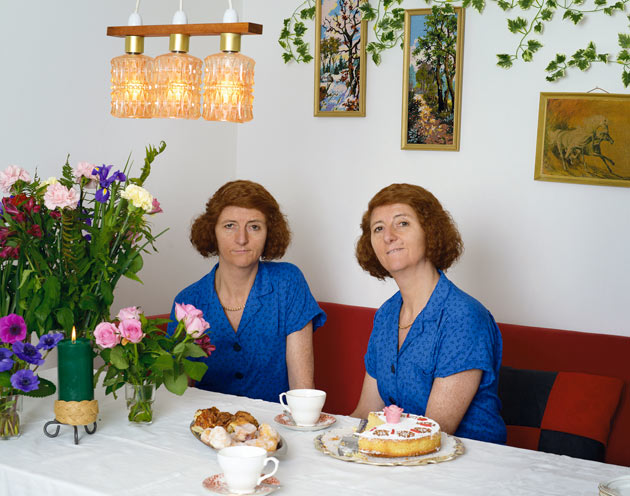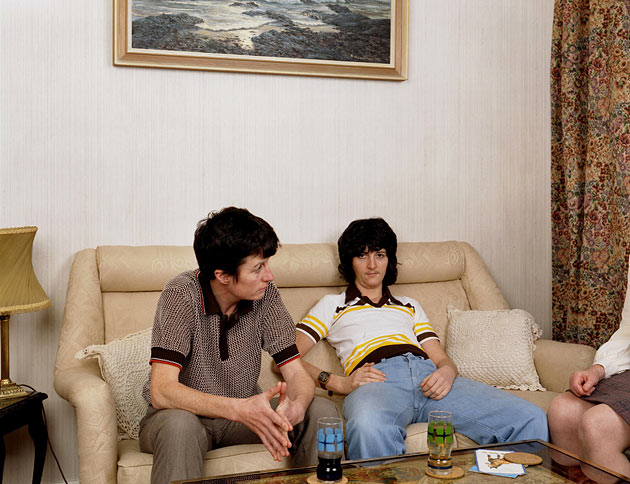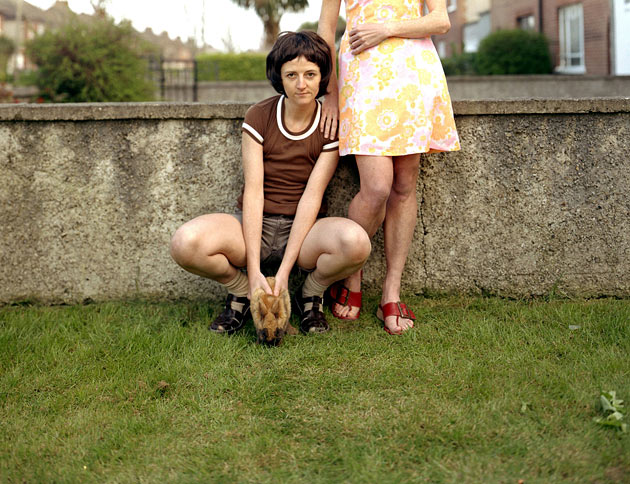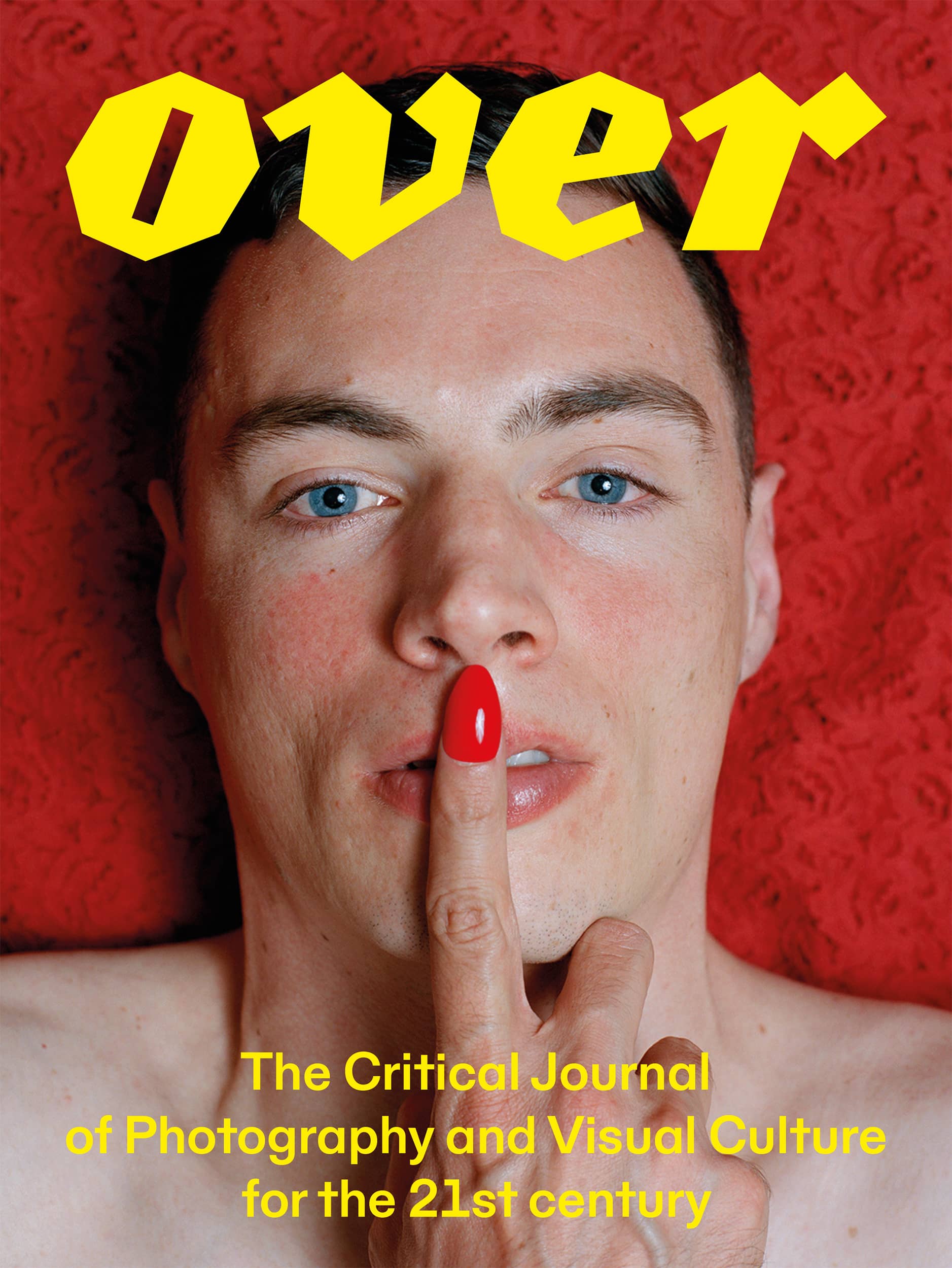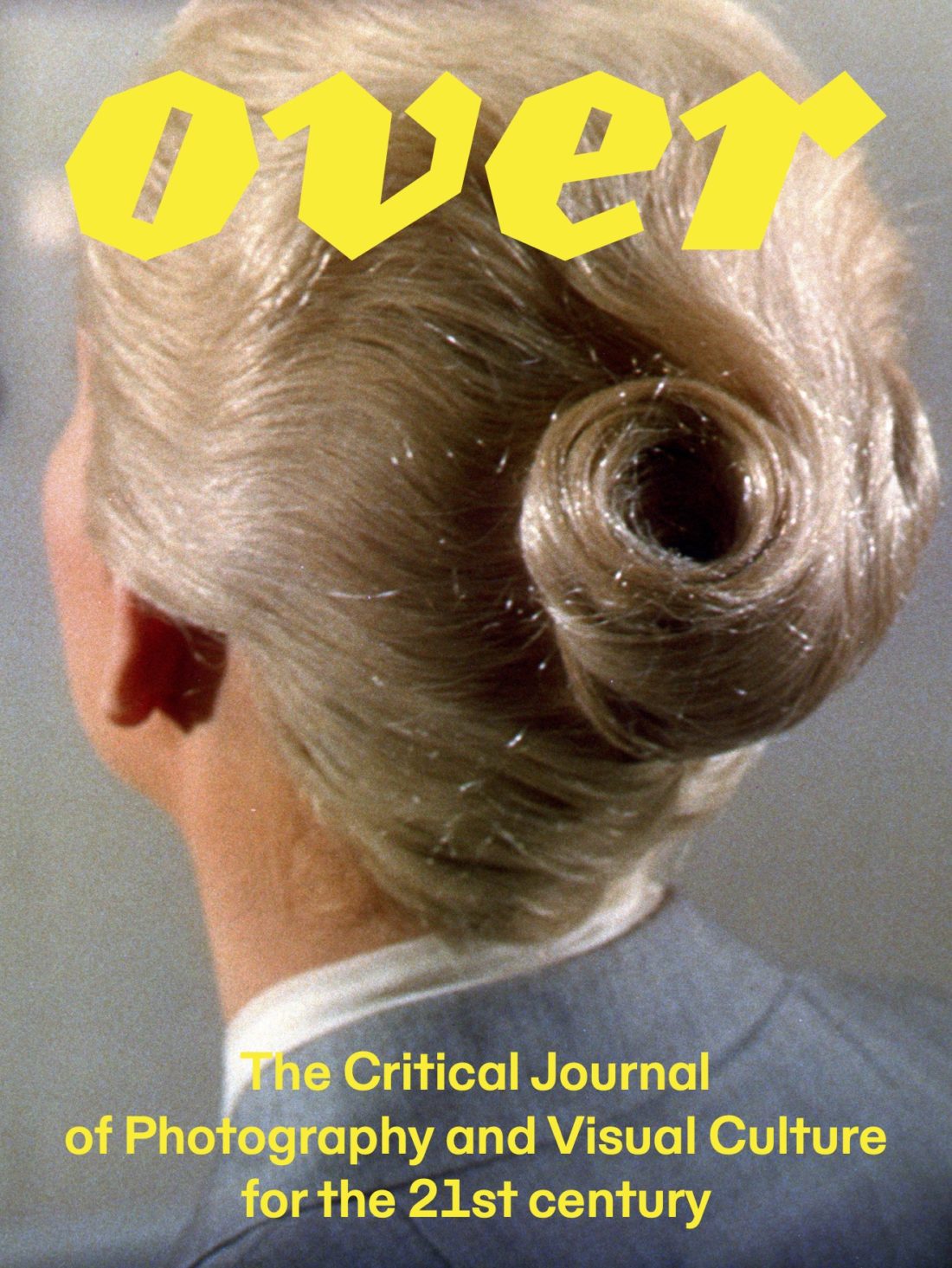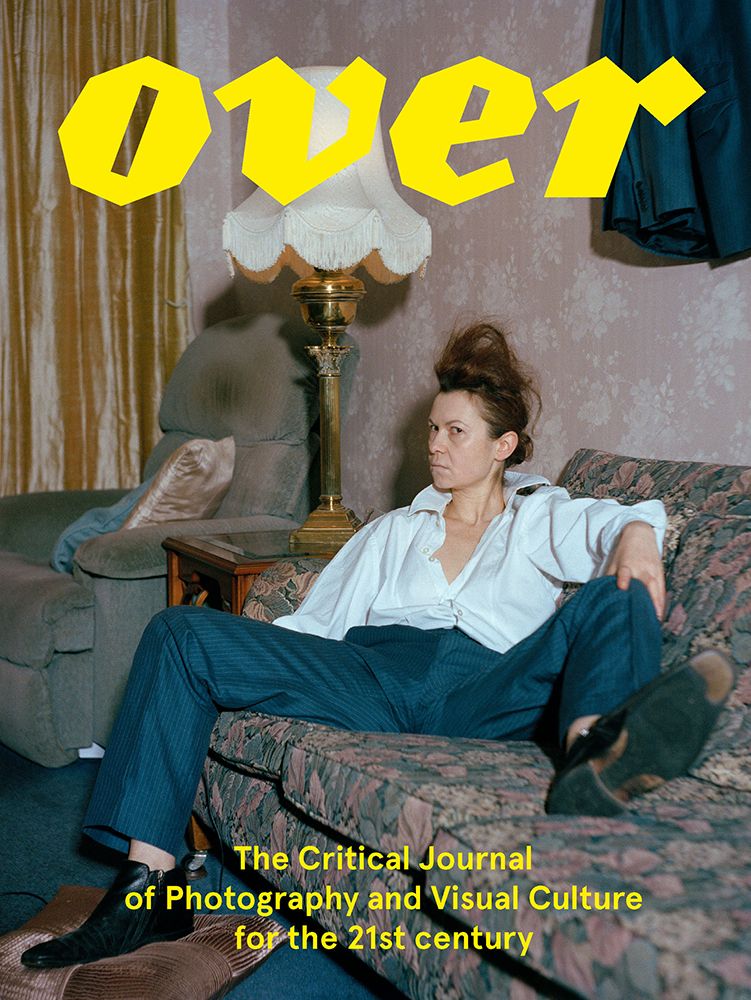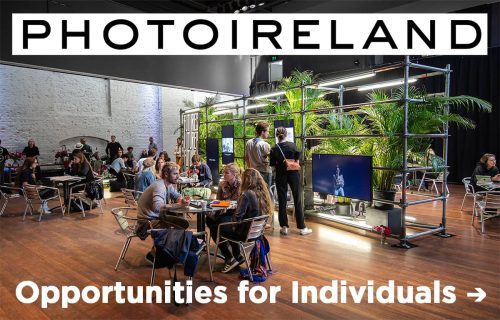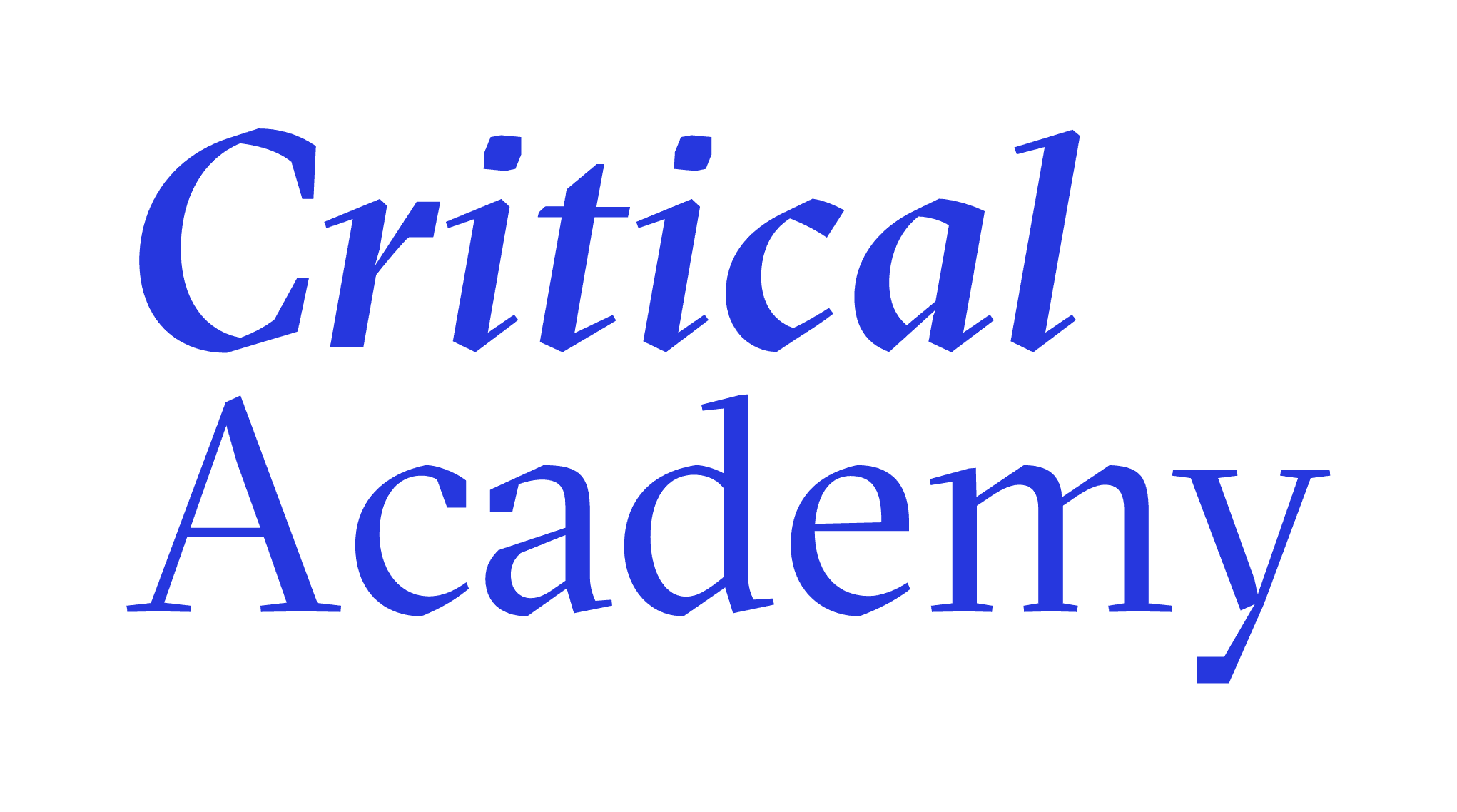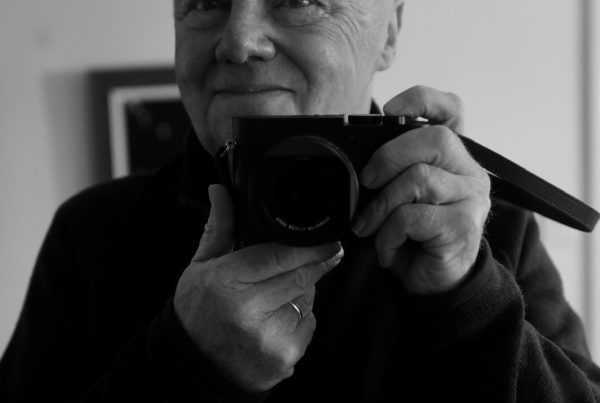
Bio & Career
Trish Morrissey (born Dublin, now lives in the UK) works with photography, film and video. She has exhibited in solo and group shows nationally and internationally and her work is in major collections including the Victoria and Albert Museum and Michael Wilson Center for Photography. Recent projects include Ten People in a Suitcase for Touching from a Distance, Gösta Serlachius Fine Art Foundation, Mänttä, Finland (2015) (for which she was a shortlisted for the Taylor Wessing Portrait Prize 2015); and Face the Collections, a residency and exhibition with Bettina von Zwehl at Bohuslän Museum, Sweden (2016). Morrissey has been Artist in Residence at Hestercombe during 2017.
Publications
Photography books by Trish Morrissey
- 2017 A Certain Slant of Light, Somerset: Hestercombe Gallery
- 2009 Front, Bradford: Impressions Gallery
- 2004 Seven Years, Bradford: Impressions Gallery
Photography books with contribution by Trish Morrissey
- 2017 PYLOT magazine issue No.7 Autumn
- 2012 Exit Image and Culture, The Beauty Issue
- 2012 Photography and Ireland by Justin Carville, Exposures
- 2011 Sleek Art and Fashion, XX XY issue
- 2011 L’Insensé, British Photographers, Issue no.8
- 2010 Autofocus, The Self-Portrait in Contemporary Photography, by Susan Bright, London: Thames and Hudson
- 2009 Cabinet, issue No.34
- 2009 Portfolio, The catalogue of contemporary photography in Britain, Issue No. 49
- 2006 Vitamin Ph, Survey of International Contemporary Photography, London: Phaidon Press
- 2005 EV+A, (Catalogue), Limerick City Art Gallery and Gandon Editions, Cork
- 2005 The Photograph as Contemporary Art, Charlotte Cotton, London: Thames and Hudson
- 2004 EASTInternational Catalogue, Norwich School of Art and Design, Norwich, UK
- 2003 Schweppes Portrait Award catalogue, National Portrait Gallery, London
- 2003 Masquerade, ed. Kate Newton and Christine Rolph, Ffotogallery, Cardiff
- 2002 John Kobal Award catalogue, National Portrait Gallery, London
- 2000 Source, contemporary photography in Ireland and Britain, Issue 22
- 1999 Visionaire 29, Visionaire: New York
- 1996 Double Vie, Double Vue, Foundation Cartier Pour l’Art Contemporain, Paris
Awards and honours
- 2017 Hestercombe Gallery Artist in Residence
- 2017 Grants for the Arts, Arts Council of England
- 2015 Residency at Gallery of the Bohusläns Museum in Uddevalla, Sweden
- 2014 Residency at Gösta Serlachius Fine Art Foundation, Mänttä Finland
- 2012 Nuit Des Images, Musee de l”Elysee, Lausanne, Switzerland
- 2012 Celeste Prize Shortlist
- 2011 Nominated for Musee de l”Elysee/Lacoste prize
- 2010 Photographer’s Gallery, London, Olympic 2012 Portrait Project
- 2009 Commission from Impressions Gallery, Bradford
- 2009 Culture Ireland travel grant
- 2009 Grants for the Arts Award, Arts Council
- 2009 The London Art Book Fair, Whitechapel Gallery
- 2007 Bursary from The National Media Museum , Bradford
- 2007 Artist in Residence, Monash University, Melbourne, Australia
- 2006 Prospective Sites, European Union Public Art Commission, Billboard Project, Austria
- 2005 Grants for the Arts, Arts Council of England
- 2005 Advanced Scholarship in Art and Design Research Grant Southampton Solent University Centre
- 2004 Commission from Impressions Gallery, York
- 2004 Grants for the Arts, Arts Council of England
- 2004 Research Grant, Southampton Institute Centre for Advanced Scholarship in Art and Design
Exhibitions
Solo exhibitions
- 2017 Trish Morrissey: A Certain Slant of Light, Hestercombe Gallery, Somerset UK
- 2010 Trish Morrissey: Photographs and Video at Centre Contemporary Photography, Melbourne Australia
- 2009 Front, Impressions Gallery, Bradford
- 2007 Elaine Levy Project, Bruxelles, Belgium
- 2005 Seven Years, Yossi Milo Gallery, New York, USA
- 2005 New Works, (Impressions touring show) The Pump House Gallery, London and Gallery of Photography, Dublin
- 2004 New Works, Impressions Gallery, York
- 2004 New Works, (Impressions touring show) Gardner Arts Centre, University of Sussex
Group exhibitions
- 2016 Face the Collections, with Bettina Von Zwehl at Bohuslans Museum, Udevalla, Sweden
- 2015 NPG/Taylor Wessing Portrait prize, National Portrait Gallery, London
- 2015 Self:Image and Identity, Turner Contemporary, Margate, UK
- 2015 Touching from a Distance, Gösta Serlachius Fine Art Foundation, Mänttä, Finland
- 2015 Portraits from an Island, Goa International Festival of Photography, India
- 2015 The World in London, OCT, Shenzen, China
- 2014 Family Matters, Palazzo Strozzi, Florence, Italy
- 2013 Making it up:Photographic Fictions, Victoria and Albert Museum, London
- 2013 Other Family Narratives, Visionas, Huesca, Spain
- 2013 Modern Families: Relatives and Relationships in Art, Lewis Glucksman Gallery, Cork, Ireland
- 2012 From Here to There: Subject Stagings Between Reality and Fiction, Austrian Cultural Forum, London
- 2012 Hijacked, Perth Institute for Contemporary Arts, Australia and Quad, Derby, UK
- 2012 The World in London Photographers’ Gallery off-site project, Oxford Street and Victoria Park, London
- 2011 Alice in Wonderland, curated by Sheyi Bankale, Anna-Kaisa Rastenberger and Elina Heikka, LOGOMO, Turku, Finland
- 2010 Update UK: Photography in Britain since 2000, Photomonth, Krakow, Poland
- 2010 IDENTITÄT, Fotogalerie Wein, Austria
- 2009 Elaine Levy Project, Bruxelles, Belgium
- 2008 Claremorris Open, Ireland, selected by Lizzie Carey-Thomas, curator Tate Britain
- 2007 Alone Together, F-Stop, Leipzig Festival of Photography, Germany
- 2007 Elaine Levy Project, group show, Bruxelles, Belgium
- 2006 Family Photos, two person show with Richard Billingham. Gallerie Photo du Pole Image Haute-Normandie, Rouen, France
- 2006 EuropART, contemporary art from Europe, curated by Walter Seidl and Ursula Maria Probst, Billboard project, Vienna and Salzberg,
- 2006 Alone Together, Galerie Nouvelles Images, Den Haag, Netherlands
- 2005 ev +a, selected by Dan Cameron, Curator New Museum of Contemporary Art, New York, Limerick City Gallery of Art, Ireland,
- 2004 EAST International,selected by Neo Rauch and Gerd Lybke, Norwich Gallery, Norwich,
- 2003 Boundless, curated by Saskia Asser and Marga Rotteveel, Fotofest, Naarden, The Netherlands,
- 2003 Schweppes Portrait Award, National Portrait Gallery, London
- 2002 Critical Dictionary, curated by Esther Windsor, Mirror Gallery, London
- 2002 John Kobal, 10 Years, National Portrait Gallery, London
Projects
- A Certain Slant of Light (2017)
“The photographs and films that form A certain slant of light were made during a year long residency at Hestercombe House, a stately home and gardens in Somerset, England. The project developed around my research into the lives of Elizabeth Maria Tyndale Warre (1790-1872) and The Hon Mrs Constance Portman (1854-1951), two women who at different times in the nineteenth and early twentieth centuries ran this extensive country estate without the influence of men. ‘Miss Warre of Hestercombe’ and ‘Mrs Portman’ as they were known respectively were both eccentric in different ways. Miss Warre who never married, had a very personal take on fashions of the time and would cause a stir whenever she went out in her nineteenth century home made clothes and bonnets, with her hair tossed up any old how, fastened with a comb. She was a great beauty in her youth, but rebuffed all suitors and was a recluse from middle age, never leaving the estate. Mrs Portman became widowed early in her marriage and was devoutly religious. She forbade the house servants from looking her in they eye, looking out of the window, or going into the garden. She liked her lady’s maid to stroke her feet with a feather to help induce sleep. Mrs Portman allowed the servants to listen to the gramophone on their afternoon off, but she chose the music. Crossing the disciplines of performance and photography I drew on extensive archive material such as photographs, drawings, newspaper clippings, letters and testamonies. Combining fact, fiction and fantasy, and playing all the roles myself, my films and photographs are based on my interpretation of the lives of these extraordinary women. I touch on a broad range of themes that span past and present, including class, gender and role-play, body and gesture, the language of photography, and the uncertain, ambiguous relationship between public and private, all performed in the English countryside.”
- The Successful Realist (2017)
“The Successful Realist is a reprise of a project I made in 2011 when my daughter, Caitlin, was five years old. For that series she painted my face to represent various aspects of her world; a movie she had watched, a social event, or a vivid dream. Together, we then photographed the results of her artistry.That project was called The Failed Realist, which is what psychologists call the stage of child development between four and six years, when their verbal and visual skills are beyond their mark making abilities. This means that a child’s desire to represent their world through drawing or painting is hampered by motor, graphic and cognitive obstacles that are subsequently overcome with age.Caitlin is now eleven and her fine motor skills have hugely improved. Almost a teenager, with growing independence, she has a totally different frame of reference to her five-year-old self. As before, I gave her completely free reign. Where previously it had been an endurance test; her clumsy brush skills poking and scratching my skin for up to an hour, this time she was an artist with a canvas, a successful realist. Some of the results from the second iteration of this process were obscure and witty (The Cyclops Twins), and others ghoulish (Clown Face). Some were influenced by her time online (Miranda Sings, Emoji(Love Eyes)), others express her generation’s obsession with the world they are being left to fix (Life and Death)”
- Ten People in a Suitcase (2015)
“Ten People in a Suitcase came about as a response to the archive of over 30,000 photographs that are held by the Gösta Serlachius Fine Art Foundation in Mänttä, Finland. The town was originally built around a paper mill which was founded in 1868. Though the mill is still there, it is a pale shadow of its original glory, now producing mostly toilet paper. Mänttä currently has just over 6,000 inhabitants.Some of the pictures in the archive are of places and individuals of note, important people in the history of the mill and of the town. Most of the images however are of the ordinary folk of Mänttä, often anonymous, mostly engaged in ordinary, activities.I chose ten photographs as guides, recreating the scenes with myself as protagonist and narrator. Each character I chose to re-imagine had something about them that I recognised. I felt there was a part of me already within the photograph. It could have been the way the character stood,or the space they took up in the frame, a glint in the eye, or an authority in the angle of the hand. I felt a visceral connection to them.In order to create these new photographs, I had to imagine the events that led up to this moment in the character’s lives, and in doing so, felt closer to the town itself. The photographs transcend mere re-enactments, they are embodiments of real individuals who are more than just their snap shot.My work often plays with the idea of photography as a language that can be translated and understood in different ways. I play with the tropes of certain genres of photography, and distort them to produce new meanings. Through performance, Ten People in a Suitcase is a study of how historic photographs function in the world by depicting the clash between historical and contemporary image making.”
- Rosa, Irma and the Sandman (n.d.)
“Identical twins Rosa and Irma Bohlin, were born in 1915 in the Bohuslans region of Sweden. I discovered the beautiful intricate dolls and dolls’ clothes made by them while I was on a study trip to the Bohuslans Museum in Udevalla. Seamstresses by profession, they made clothes only for women, and their own collection of dolls. The connection between the double/identical twin/ dolls and Freud’s theory of the Uncanny is well known. Something causes a stir deep in the unconscious. Rosa and Irma shared a bedroom all their lives, dressed identically, bickered constantly and were never without each other. I am drawn to eccentricity, and my way of understanding is through performance and photography. Using the photographs of them in the museum collection as starting points I worked in and around my own home in Somerset, UK, building sets and finding props and clothes to set scenes reminiscent of Stenungsund, their home town. First I performed as Rosa, confident, smiley and positive, then as Irma who was shy and a little sad. For ‘The Sandman’ I recreated the studio of a local photographer from the early 20th century whose work is held at the museum and who had photographed Rosa and Irma many times. I posed with one of the twins’ dolls (whose eyes were lost over time) to make a single photograph that encapsulates the darker side of childhood. The title comes from the German short story ‘Der Sandmann’, by E.T.A Hoffman (which was the basis for Freud’s essay Das Unheimliche/The Uncanny). It is the tale of Nathanial, a man still traumatised by a childhood nightmare, where the Sandman comes to the house at night and plucks out the eyes of children.”
- The Failed Realist (2011)
“Between the ages of four to six children are often more verbally than visually articulate. This means that what they wish to express through mark making is often beyond their physical skill. The psychologist Georges-Henri Luquet (1927/2001) called this The Failed Realist stage – the child’s desire to represent his or her world is hampered by motor, cognitive and graphic obstacles that will be overcome with time, but for the moment, their interpretation is flawed. These drawings are uncorrupted by representational conventions. The Romantic artists thought this was a reflection of direct access to the expressive self and strove for a return to this innocence in their own painting. Later on, painters of the modernist movement, such as Picasso, Miro, and Klee saw the drawings of children with their mixed perspectives and exaggerated features as a pure way of seeing. Picasso famously said ‘It took me four years to paint like Raphael, but a lifetime to paint like a child’This photographic series was made in collaboration with my daughter when she was between the ages of four and five years. Face painting is a rainy day activity that we both enjoy. Once her motor skills evolved sufficiently well for her to control a paintbrush, she wanted to paint me rather than be painted. Instead of the usual motifs of butterfly, or flower, she would decide to paint something from her immediate experience – a movie she had just watched, a social event, a right of passage, or a vivid dream. Beyond the innocence of the child’s intention, more sinister themes such as clowns, carnival and the grotesque are evoked by these mask like paintings.”
- Front (2007)
Front deals with the notion of borders, boundaries and the edge, using the family group and the beach setting as metaphors. For this work, the artist travelled to beaches in the UK and around Melbourne. She approached families and groups of friends who had made temporary encampments, or marked out territories and asked if she could be part of their family temporarily. Morrissey then took over the role or position of a woman within that group – usually the mother figure. She asked to take her place, and to borrow her clothes. The woman then took over the artist’s role and photographed her family using a 4×5 camera (which Morrissey had already carefully set up). While Morrissey, a stranger on the beach, nestled in with her loved ones. These highly performative photographs are shaped by chance encounters with strangers, and by what happens when physical and psychological boundaries are crossed. Ideas around the mythological creature the ‘shape shifter’ and the cuckoo are evoked. Each piece within the series is titled by the name of the woman who Morrissey replaced within the group.
- Seven Years (2004)
Seven Years aims to deconstruct the trope of family photography by meticulously mimicking it. In the series, the title of which refers to the age gap between the artist and her elder sister, Morrissey functions as director, author and actor, staging herself and her sibling in tightly controlled, fictional mis en scene based on the conventions of family snapshots.In order to construct images that appear to be authentic family photographs from the 1970s and 1980s, Morrissey uses period clothing and props, both her own and others, and the setting of her family’s house in Dublin. They assume different characters and roles in each image, utilizing body language to reveal the subtext of psychological tensions inherent in all family relations. The resulting photographs isolate telling moments in which the unconscious leaks out from behind the façade of the face and into the minute gestures of the body.
Works
- “Before I got my eye put out”, A certain slant of light (2017)
- “Forever is composed of nows”, A certain slant of light (2017)
- “Miranda Sings”, The Successful Realist (2017)
- “Tea and Cake”, Rosa, Irma and the Sandman
- “January 25th 1979”, Seven Years (2004)
- “July 22nd 1972”, Seven Years (2004)

